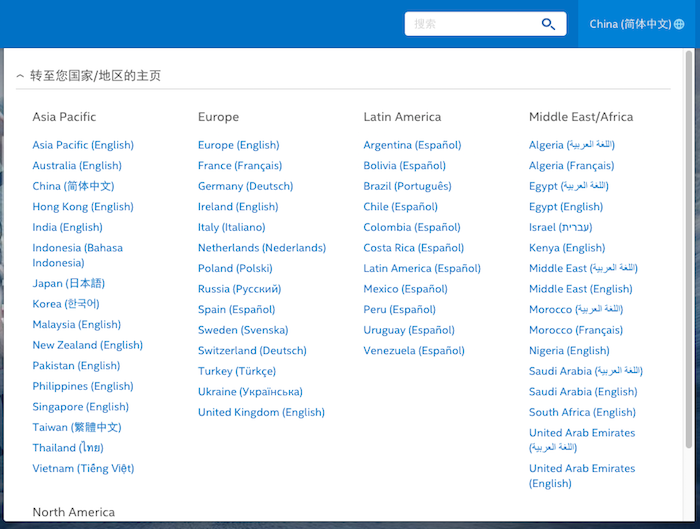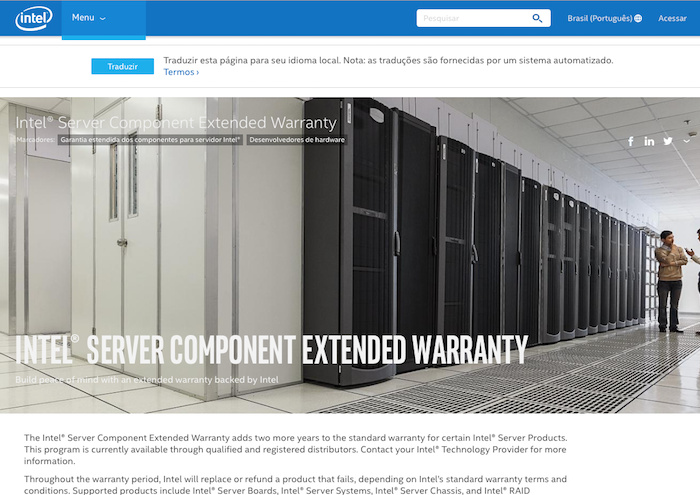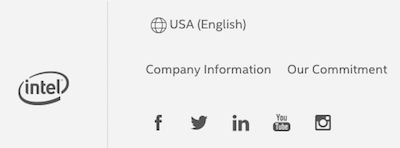For the 2016 Web Globalization Report Card, we studied 11 enterprise technology websites:
- Autodesk
- Cisco Systems
- EMC
- IBM
- Huawei
- Intel
- Oracle
- SAP
- Texas Instruments
- Xerox
- VMware
With support for 23 languages, Intel is not the language leader in this category; Cisco Systems leads with 40 languages.
But Intel leads in other ways.
Such as global navigation. First and foremost, Intel has embraced country codes, such as:
- www.intel.de
- www.intel.co.jp
- www.intel.cn
On the China home page, the global gateway is perfectly positioned in the header. Also, note the globe icon — which makes this global gateway easy to find no matter what language you speak:

Selecting the globe icon brings up this “universal” global gateway menu:

Universal means this menu can be used across all localized websites — because the locale names are presented in the local languages and scripts (for the markets in which they are supported).
Unfortunately, on the mobile website the globe icon is demoted to the footer. Shown here is the Polish home page:

Intel supports strong global consistency across its many local websites. Depth of local content varies and there are gaps in support content across a number of languages.
But Intel is making smart use of machine translation to allows users to self-translate content into their target language. Shown here an excerpt from the Brazil website.

The button near the top of the page is what users select to self-translate content. Too few companies are making use of machine translation currently.
One concern, looking ahead, is that the .com design has very recently demoted the global gateway icon to the footer.

Ironically, it is the .com website that most requires a global gateway in the header because more than half of all visitors to the .com website originate outside of the US.
For more information, check out the Web Globalization Report Card.
